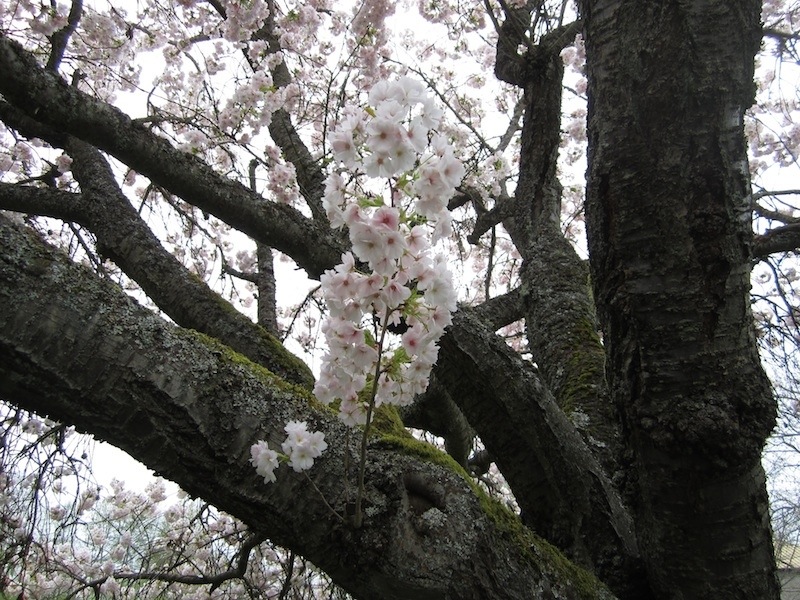 On Saturday, July 26th, Seattle lost one of its rare Japanese Flowering Cherry trees. A thirty foot tall ‘Horinji’ tree, likely dating from the 1940s, fell over into an adjacent Yoshino cherry tree near the Montlake Community Center tennis courts. To the east still stand two other ‘Kwanzan’ cherry trees, and more of Yoshino. Both these latter kinds are very common in contrast to ‘Horinji’.
On Saturday, July 26th, Seattle lost one of its rare Japanese Flowering Cherry trees. A thirty foot tall ‘Horinji’ tree, likely dating from the 1940s, fell over into an adjacent Yoshino cherry tree near the Montlake Community Center tennis courts. To the east still stand two other ‘Kwanzan’ cherry trees, and more of Yoshino. Both these latter kinds are very common in contrast to ‘Horinji’.

This photo shows how the flowers appeared in mid-April (the first photo above shows rot at the tree base). Tree root rots are exacerbated by such factors as mulch applied too heavily at tree bases, and overwatering. Dry-site trees in general live longer than trees in wet places.
The ‘Horinji’ tree is not grafted, being unlike most cherry trees sold these days. Own-root Japanese Flowering Cherry trees live longer than those that are grafted on European rootstocks. It seems that somehow a delayed graft incompatibility sets in, becoming—in effect—the nursery industry’s version of planned obsolescence.
Since the fallen ‘Horinji’ tree is not dead, people can attempt to root twig cuttings from it, before the Park workers feed it into a chipper. Since few cuttings will root, many should be tried. ‘Horinji’ is no longer available at nurseries, so if people desire one they must do their own propagation.
‘Horinji’ is the name of an ancient Buddhist temple in Kyoto, Japan.
Lilia Valeeva says
What was the cause of tree falling?
Ellen McCown says
Thanks Arthur for letting us know about the fallen tree and potential to propagate.
E. McCown